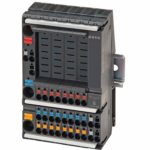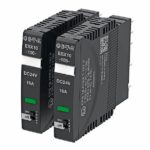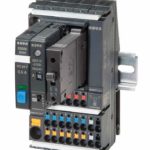In the past, chemical plants used to be supplied by centralised control rooms. The generously dimensioned rooms offered sufficient space for all equipment and at the same time allowed enough cooling capacity for the components. Temperature rise was therefore not an issue. This made planning and extension of systems easy. Large battery arrays or transformers supplied all components of the entire plant. Kilometres of copper wire lines were characteristic for a 24 V(DC) power distribution. The only problem was the voltage drop on the supply lines and an effective protection of the various loads in the field also was a challenge not to be underestimated.
Relocation to the field
If you look at modern plant construction, you will notice that the control components are transferred to the field. This allows a quicker recording of measuring data and, at the same time, prompt access to the control components. This decentralised approach on the control level then also leads to a decentralised approach of the 24 V(DC) power supply – including all associated advantages and disadvantages.
A major advantage of a decentralised power distribution is the proximity to the process and thus significantly shorter cable lengths. This allows a better control of the production processes and reduces the required wiring, saving material costs and installation time. But as so often in life, there is no light without shadow. Decentralised control cabinets offer rather little space, requiring small, compact and modular devices. In addition, temperature development of the components in the control cabinets or distribution boxes must be considered much more closely than before. Power loss of the individual devices and the associated heat emissions are an essential factor.
Individual power distribution systems
Power distribution systems like E-T-A’s Module 18plus are exactly tailored to the requirements of decentralised systems in the process industry. They offer the perfect combination of modular design and flexibility for setting up a 24 V(DC) power distribution. The Module 18plus power distribution system consists of three modules. The supply module has push-in terminals which accommodate cable cross sections of up to 16 mm2. This allows the distribution of up to 80 A across the entire system. The connection modules are added side-by-side to this supply module by the plant operator. The maximum solution consists of 30 modules mounted side-by-side. Each connection module can be operated with a max. load current of 20 A. The wide range allows the best possible distribution of the used loads. Each connection module has two each protected terminals for the loads as well as two terminals for zero volt and functional earth. This ensures a clear correlation between the different loads and the corresponding circuit protector.
The signalling module completes the system. Each circuit protector has an auxiliary contact transmitting the status. All circuit protectors used are connected in series. If a circuit protector trips, this is detected and indicated by means of the signalling module. A process control system monitors and visualises this signal contact. The plant operator can quickly gain an overview of the status of the 24 V(DC) power distribution.
Plug-in type circuit protectors
The plug-in design of the power distribution system allows the design engineer to meet the requirements of his plant very individually. A range of electronic circuit protectors is available for the different applications.
E-T-A designed the ESX10 electronic circuit protectors for the specific requirements of potentially explosive atmospheres. They have various approvals valid for the Atex zone 2. This allows the use of decentralised solutions and ideally protects the 24 V(DC) power distribution. Current ratings are available in a range of 0.5 to 16 A and are internationally usable with approvals to Atex, IECEx and ISA. To meet the rising demand for electronic circuit protectors with higher current ratings, E-T-A extended its portfolio to include a 16 A version. This circuit protector meets the requirements of protecting the input and output sub-assemblies of process control systems.
The plug-in design supports the system’s flexibility. For applications in a standard industrial environment, the above described approvals are not required. In this case, an electronic circuit breaker providing physical isolation can alternatively be used. In the event of a short circuit or overload, these breakers do not only electronically disconnect the circuit, but they also ensure physical isolation through a mechanical contact. In standard electronic circuit protectors, a power mosfet disconnects the load circuit. In normal duty, it is low-resistance and becomes high-resistance when tripped. This additional functionality offers extended protection to the user. In the event of a short circuit, the circuit protector first electronically disconnects the load circuit. After another five seconds, it will additionally physically separate the load circuit. For this purpose, a bimetal, which is connected in series with the mosfet, is supplied with current. When heating up, the bimetal deforms and physically isolates the load circuit by a clearance gap. This prevents hazardous return supply on the 24 V(DC) level and increases plant safety.
Conclusion
The change from centralised to decentralised design in plants of the process industry offers many advantages. However, we also need to mention that design engineers are faced with new challenges. The proximity to the plant and the process affects the available size of the control cabinets and possibly also the safety requirements. A possible temperature rise of the devices and the compact design become more and more important. This must be taken into account when selecting the components to be used in a 24 V(DC) power distribution. Due to its compact and modular design, the Module 18plus is ideally suited to the task. In addition, the plug-in design offers unrivalled flexibility regarding suitable circuit protectors or breakers.
E-T-A Elektrotechnische Apparate GmbH, Altdorf, Germany











